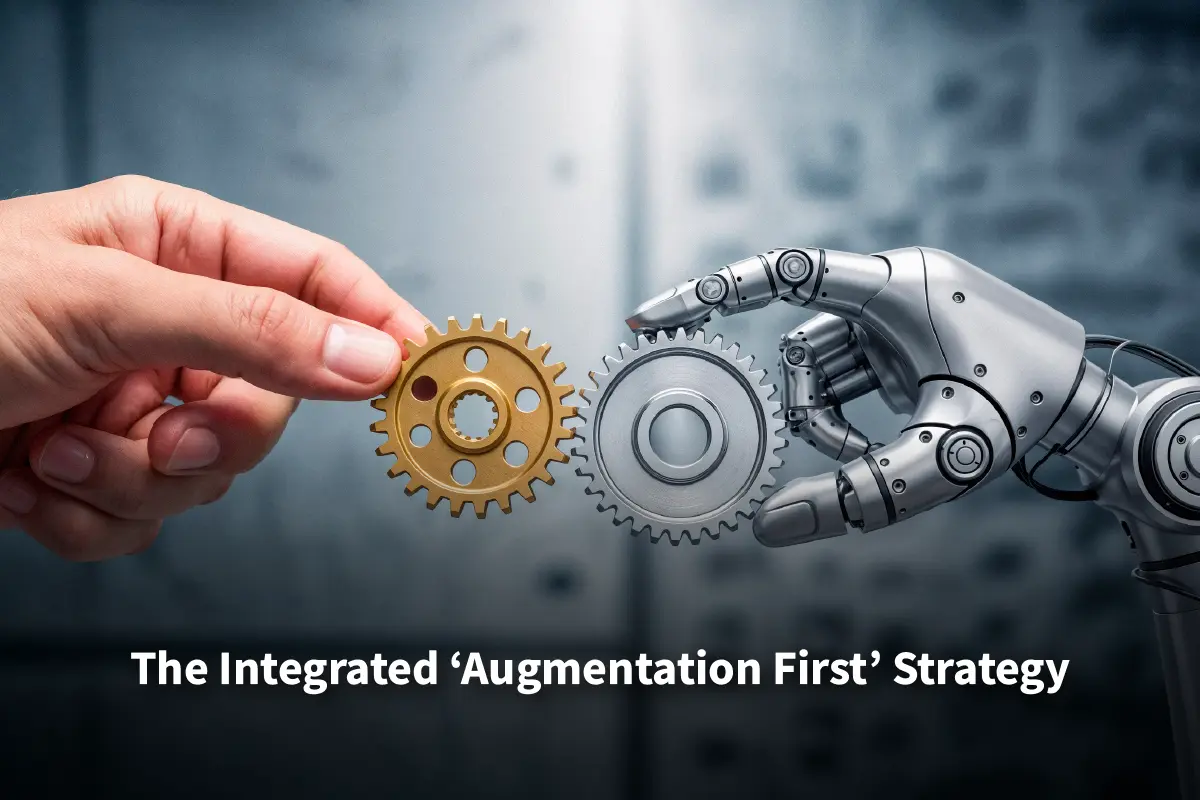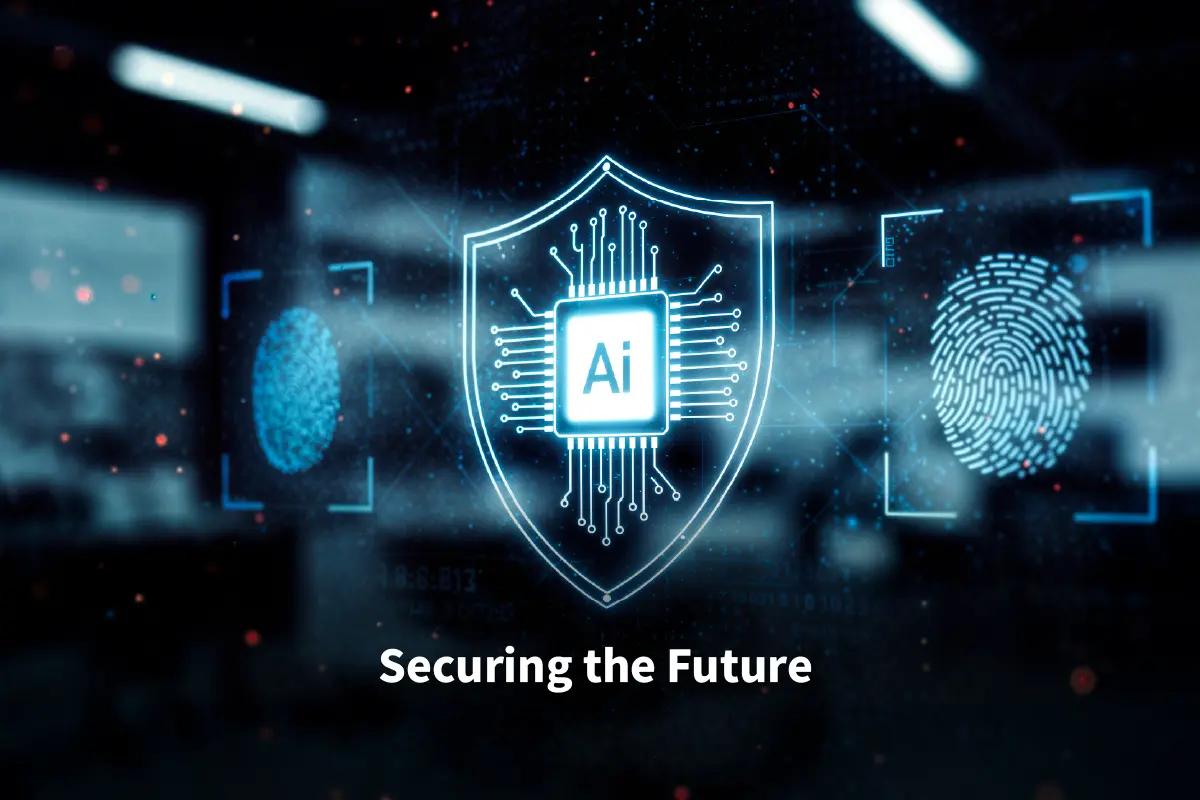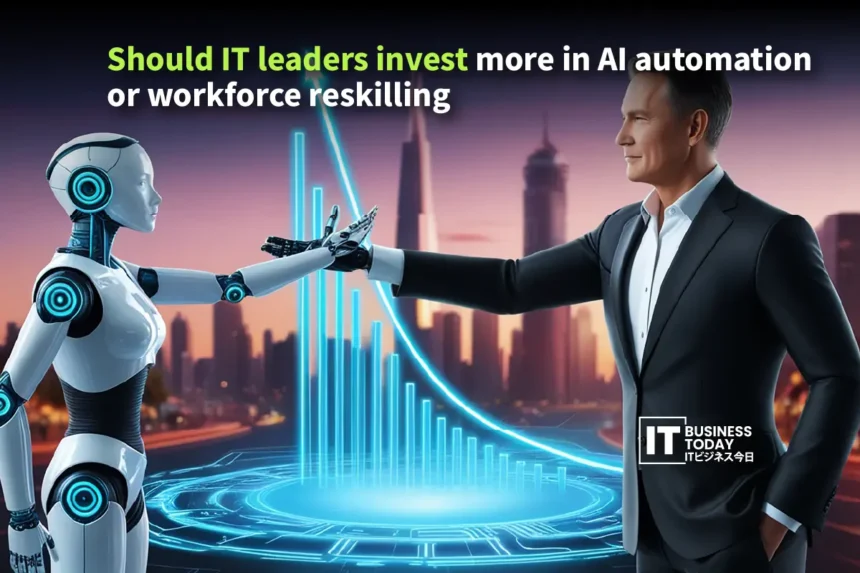IT人材が不足する日本。労働人口の高齢化が急速に進んでいます。ITの役割を担える人材の数は減少しています。IT部門が空くたびにプレッシャーがかかります。プロジェクトは停滞。チームは手薄になります。
これは難しい問題を提起しています。企業はAIの自動化を用いて即効性のある効率化を推し進めるべきか?それとも、将来の課題に対応できる人材の再教育に力を入れるべきか?一方は短期的なギャップを埋めること。もうひとつは長期的な強さを築くこと。どちらも急務です。
日本は違う道を歩もうとしています。日本は「オーグメンテーション・ファースト」のアプローチを採用しています。機械と人間は共に働く必要があります。Society 5.0と人間中心のAIが道を示しています。2025年6月の産業構造 2040 レポートでは、AIが設備点検などの作業を代行し、作業をスピードアップできると指摘しています。また、新しいスキルを習得し、より重要な課題に集中することができます。
こちらもお読みください: アサヒグループ、サイバー攻撃からビール生産を再開
加速のケース
日本では 情報技術 手労働力は減少し、ルーティンワークは山積みです。データ入力、コンプライアンス・チェック、Tier1サポート、これらすべてのタスクに時間がかかります。時間がかかりすぎます。AIの自動化により、その手間が省けます。反復的な作業を行います。システムの稼働を維持します。そして、より大きな問題を解決する余地を人々に与えます。それがなければ、遅れが生じます。プロジェクトは停滞。チームは燃え尽きます。
政府は立ち止まってはいません。インセンティブ、政策、インフラ投資が、企業にテクノロジーの迅速な導入を促しています。AIはもはやオプションではありません。生き残るためです。今行動する企業は先手を打てます。待っている企業は?他社が先を急ぐ中、遅れをとるリスクがあります。
生産性も同じことを物語っています。日本のサービス業は世界の競合他社に遅れをとっています。遅い修正を待つことは戦略ではありません。AIはワークフローをスピードアップし、ミスを減らし、チームを迅速に対応させることができます。これは単なる効率化ではありません。グローバルな競争に遅れをとらないためなのです。
ジェトロ AIとIoT市場は着実に成長AIとIoT市場は着実に成長しています。企業が先行するチャンスは現実のものです。ITリーダーにとって、選択は簡単です。労働力のギャップを埋めるために、今すぐAIの導入を加速させること。チームの育成は後回し。遅れは生産性と競争力のギャップを広げるだけです。
長期キャパシティのケース
日本のIT不足を見て、問題は人員だと考えるのは簡単です。現実はもっと深い。本当の格差はスキルにあります。 AI 新たな雇用が創出される一方で、古い雇用を失う人々は自動的にその準備が整うわけではありません。役割はあっても、それを担う熟練した人材がいないのです。行動しなければ、たとえ職場に人手があったとしても、成長は停滞します。
今、必要とされているスキルは異なります。日常的なコーディングや基本的なシステムメンテナンスだけではもはや十分ではありません。チームには、AIシステムを監督し、その出力を倫理的に監査し、機械が処理できない複雑な問題を解決できる人材が必要です。高度なプロンプト・エンジニアリング、AIによる意思決定の倫理的レビュー、戦略的な問題解決は、中核的なスキルになりつつあります。これらは一夜にして身につくものではありません。計画的な再教育プログラムと実地経験が必要です。
IT部門は、他のどの部門よりもこの逼迫を感じています。日本には高度なスキルを持ったエンジニアが必要ですが、単に数が足りないのです。AIツールの運用やイノベーションをリードする人材が見つからなければ、企業は成長することができません。自動化を完全に導入している企業でも、スタッフがそれを効果的に活用できなければ、限界に達します。的を絞ったスキル向上がなければ、自動化が十分に活用されない危険性があります。
について 世界経済フォーラムの 雇用の未来レポート2025」で明らかになったこと。AIが一部の仕事を引き継ぐことは間違いありません。しかし、より価値の高い新しい役割も生まれるでしょう。日本では、企業は待ってはいられないということです。労働者はこのような機会に踏み出すためのトレーニングが必要です。再教育をスキップすることは、誰にも許されないリスクです。今、人間中心のスキル構築に注力している企業は、人間とAIが共存する世界で生き残るだけでなく、リードしていくでしょう。
ITリーダーにとって、この教訓は極めて重要です。自動化だけでは日本の労働力問題を解決することはできません。機械で役割を補うことは、パズルの一部に対処するだけです。真の利点は、AIツールと熟練した即戦力チームが出会ったときに生まれます。先手を打った企業は、スキルギャップを解消し、より賢く成長し、グローバルな競合他社に打ち勝つことができるでしょう。
統合された「補強第一」戦略

多数 リーダー AIかリスキルか。真実は、選択肢はありません。自動化だけでは資本と能力が不足します。リスキリングだけでは、ツールは十分に活用されません。両者が同時に機能することで、本当の強みが生まれます。AIを導入し、同時に従業員を訓練する企業は、効率性以上のものを手に入れることができます。成果が定着するのです。
日本のSociety 5.0ビジョンには、このアプローチが不可欠です。AIツールだけでは人間中心の目標を達成することはできません。チームには、システムを監督し、倫理的に決定を監査し、自動化を十分に活用するスキルが必要です。新しいツールの登場に合わせて従業員をトレーニングすることで、テクノロジーが人間の才能を代替するのではなく、増幅させることができます。これこそが、最も投資対効果の高い方法なのです。
統合された投資はリスクも低減します。スタッフがAIシステムを理解すれば、コンプライアンスと倫理基準の維持が容易になります。ミスが減り、セキュリティが向上し、社会的信用が高まります。同時に生産性も向上します。仕事はより速く進み、意思決定はより明確になり、チームはより革新的になります。人とAIが協働することで、どちらか一方が単独で達成するよりも大きな成果が得られるのです。
マッキンゼー 日本の2025年の洞察が明らかに。AIは労働市場を急速に変化させています。一部の伝統的な仕事は消えつつあり、新しい役割には専門的なスキルが必要です。スキルの再教育を無視する企業は、これらのポジションを埋めるのに苦労するでしょう。自動化と人材育成を組み合わせ、早期に行動を起こした企業は、持続可能な優位性を得ることができます。
ITリーダーにとって、その教訓は単純明快です。AIシステムを構築し、それを運用・改善する人材を育成すること。戦略はどちらか一方ではありません。その両方です。リスキルなしにAIを導入する企業は、無駄な投資をするリスクがあります。AIなしでリスキルする企業は停滞のリスクがあります。未来は、自動化と人間の才能を両立させる企業のものです。
ITリーダーのための戦術的青写真
最初のステップはスキルアップです。社員を一般的なコースに参加させるだけではいけません。チームがすでに知っていることをベースにした社内横断的なスキル向上プログラムを活用しましょう。その上で、新しいデジタルスキルやAIスキルを重ねます。そうすることで、より早く、より実践的な学習が可能になります。
AIガバナンスは後付けではダメ。新しいツールを展開する前に、日本独自の明確なガイドラインを設定しましょう。社内にAI倫理委員会を設置し セキュリティ正確さ、公正さ。これを早期に行うことで、従業員や一般市民との信頼関係を築くことができます。また、小さなミスが大きな問題に発展することを防ぎます。
AI管理職への投資。従業員はAIツールを使うだけではありません。管理する必要があります。パフォーマンスを監査し、アウトプットをチェックし、倫理基準を維持するチームを育成します。これにより、AIは謎めいたシステムから信頼できるパートナーに変わります。
人事慣行の再考。従来の年功序列型の昇進は、もはやデジタルの世界にはそぐいません。従業員が実際にもたらすスキルに報酬を与えましょう。デジタルコンピテンシー、問題解決能力、AI監督能力を評価しましょう。新しいスキルの習得がキャリアアップにつながると分かれば、採用は自然に進みます。
デロイトの 2025 Global Human Capital Trends レポートは、このバランスを強調しています。自動化とリスキルアップを組み合わせた企業は、より良い成果を上げ、より強いエンゲージメントを獲得しています。日本のITリーダーへのメッセージはシンプルです。AIと同じくらい人材に投資しなさい。それが、人間と機械が共に働く職場で組織が成功する方法なのです。
未来の確保

ITリーダーが直面する無視できない選択。急を要する労働力のギャップをAIでカバー。同時にチームを鍛えましょう。ツールだけでは不十分です。人間だけでは対応できません。AIと組み合わせることで、チームは今日の準備を整え、次に何が起こるかに備えることができます。
日本が道を示しています。人間中心のAIと倫理的な実践に重点を置くことで、他の国も追随したくなるようなモデルを生み出しています。このアプローチを取る企業は、より強く成長するでしょう。未来は、テクノロジーと人を共存させる企業のものなのです。







